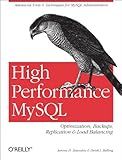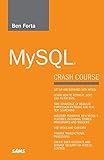Best MySQL Management Tools to Buy in October 2025

High Performance MySQL: Optimization, Backups, Replication, Load Balancing & More (Advanced Tools and Techniques for MySQL Administrators)



Learning PHP, MySQL & JavaScript: With jQuery, CSS & HTML5 (Learning PHP, MYSQL, Javascript, CSS & HTML5)



Murach's MySQL
- MASTER SQL FUNDAMENTALS FOR MYSQL WITH PRACTICAL CODING EXAMPLES.
- EASY-TO-FOLLOW GUIDANCE FOR CREATING AND MANAGING DATABASES EFFECTIVELY.
- BOOST YOUR SKILLS AND JOB PROSPECTS WITH ESSENTIAL SQL KNOWLEDGE.



Head First PHP & MySQL: A Brain-Friendly Guide



Linux Server Hacks: 100 Industrial-Strength Tips and Tools
- QUALITY ASSURANCE: EACH USED BOOK IS VETTED FOR GOOD CONDITION.
- AFFORDABLE PRICES: SAVE MONEY WHILE ENJOYING GREAT READS.
- ECO-FRIENDLY CHOICE: SUPPORT SUSTAINABILITY BY BUYING USED BOOKS.



Build a real Search Engine: Engineering tools: HTML, CSS, JavaScript, PHP, MySQL



MySQL Crash Course


To alter a table in MySQL by adding, modifying, or dropping columns, you can use the ALTER TABLE statement. Here's a breakdown of each operation:
- Adding a column: To add a new column to an existing table, you can use the following syntax: ALTER TABLE table_name ADD column_name column_definition; Here, "table_name" is the name of the table to be modified, "column_name" is the name of the new column, and "column_definition" specifies the data type and any other constraints for the column.
- Modifying a column: To modify an existing column in a table, you can use the MODIFY clause along with the ALTER TABLE statement. The syntax is: ALTER TABLE table_name MODIFY column_name column_definition; Specify the updated "column_definition" for the desired column.
- Dropping a column: To remove an existing column from a table, use the DROP COLUMN statement. The syntax is: ALTER TABLE table_name DROP COLUMN column_name; Specify the "column_name" of the column to be dropped.
Remember to replace "table_name" with the actual name of the table you want to alter, and provide the appropriate column names and definitions as required.
How to add a UNIQUE constraint to a column in MySQL?
To add a UNIQUE constraint to a column in MySQL, you can use the ALTER TABLE statement.
Here's an example of how to do it:
- Open the MySQL command-line tool or any other MySQL client.
- Connect to your MySQL server and switch to the specific database where the table exists or where you want to create a new table.
- Use the following syntax to add a UNIQUE constraint to an existing column in an existing table: ALTER TABLE table_name ADD CONSTRAINT constraint_name UNIQUE (column_name); Replace table_name with the name of your table and column_name with the name of the column to which you want to add the UNIQUE constraint. You can also provide a custom name for the constraint by replacing constraint_name with your preferred name. For example, to add a UNIQUE constraint to a column named email in a table named users, you can use the following command: ALTER TABLE users ADD CONSTRAINT unique_email UNIQUE (email);
- Execute the query, and if everything is successful, the UNIQUE constraint will be added to the column. Any attempts to insert or update data in the column that violate the uniqueness will result in an error.
Note that adding a UNIQUE constraint to a column may fail if there are already duplicate values in that column. You will need to remove or modify the duplicate values before adding the constraint.
How to add a CHECK constraint to a column in MySQL?
To add a CHECK constraint to a column in MySQL, you need to follow these steps:
- Open a MySQL client such as MySQL Workbench or the command-line interface.
- Connect to the MySQL server and select the database where your table is located.
- Locate the table to which you want to add the CHECK constraint and use the ALTER TABLE statement to modify it. The syntax for adding a CHECK constraint in MySQL is as follows:
ALTER TABLE table_name ADD CONSTRAINT constraint_name CHECK (condition);
Replace table_name with the name of your table and constraint_name with a unique name for your constraint. Finally, define the condition that must be met for the constraint.
For example, suppose you have a table called employees with a column called age, and you want to add a CHECK constraint to ensure that the age is greater than or equal to 18. You would use the following SQL statement:
ALTER TABLE employees ADD CONSTRAINT chk_age CHECK (age >= 18);
- Execute the SQL statement to add the CHECK constraint. Once the statement is executed successfully, the CHECK constraint will be added to the specified column.
Note that MySQL does not enforce CHECK constraints by default, so you need to enable them explicitly. You can do this by setting the --sql-mode server option to include STRICT_TRANS_TABLES.
Keep in mind that CHECK constraints are available starting from MySQL version 8.0.16. Compatible versions of MySQL should support the usage of CHECK constraints, but the behavior may vary depending on the version.
How to drop an INDEX from a column in MySQL?
To drop an index from a column in MySQL, you can use the DROP INDEX statement. Here's the syntax:
ALTER TABLE table_name DROP INDEX index_name;
Replace table_name with the name of the table containing the column, and index_name with the name of the index you want to drop.
For example, let's say you have a table named employees with an index called idx_employee_name on the name column. To drop this index, you would use the following query:
ALTER TABLE employees DROP INDEX idx_employee_name;
Make sure you have the necessary privileges to perform this operation.
How to add a PRIMARY KEY constraint to a column in MySQL?
To add a PRIMARY KEY constraint to a column in MySQL, you can use the ALTER TABLE statement. Here's the general syntax:
ALTER TABLE table_name ADD PRIMARY KEY (column_name);
Replace table_name with the name of your table, and column_name with the name of the column you want to set as the primary key.
For example, if you have a table called "employees" and you want to add a primary key constraint to the "id" column, you would use the following query:
ALTER TABLE employees ADD PRIMARY KEY (id);
Make sure the column you're setting as the primary key doesn't contain duplicate values, as a primary key must be unique within the table. If there are existing duplicate values, you will need to remove or update them before adding the primary key constraint.
How to rename a column in MySQL?
To rename a column in MySQL, you can use the ALTER TABLE statement combined with the CHANGE keyword. Here is the syntax:
ALTER TABLE table_name CHANGE old_column_name new_column_name column_definition;
Here's an example to illustrate how to rename a column named "old_column" to "new_column" in a table named "my_table":
ALTER TABLE my_table CHANGE old_column new_column column_type;
Replace "my_table" with the name of your table, "old_column" with the name of the column you want to rename, "new_column" with the new name for the column, and "column_type" with the definition of the column like its data type, size, constraints, etc.
Using this syntax, you can easily rename a column in MySQL.
How to change the datatype of a column in MySQL?
To change the datatype of a column in MySQL, you can use the ALTER TABLE statement with the MODIFY COLUMN clause. Here's an example of how to do it:
ALTER TABLE table_name MODIFY COLUMN column_name new_data_type;
Replace table_name with the name of your table and column_name with the name of the column you want to change the datatype. new_data_type should be the desired new datatype for the column.
For example, to change the datatype of a column named age in a table named users from INT to VARCHAR(10), you would run the following query:
ALTER TABLE users MODIFY COLUMN age VARCHAR(10);
Note that changing the datatype may result in potential data loss or unexpected behavior if the data in the column cannot be properly converted to the new datatype. Make sure to backup your data before making such changes.
How to revert an alteration made to a table in MySQL?
To revert an alteration made to a table in MySQL, you need to use the ALTER TABLE statement along with the appropriate alteration command to undo the changes.
Here are the steps to revert an alteration made to a table:
- Open the MySQL command-line client or any MySQL GUI tool.
- Connect to the MySQL server using your credentials.
- Use the following syntax to revert the specific alteration:
ALTER TABLE table_name {ALTERATION_COMMAND};
Replace table_name with the name of the table you want to revert the alteration on, and ALTERATION_COMMAND with the appropriate command based on the alteration you want to undo.
For example, if you want to revert a column addition, you would use:
ALTER TABLE table_name DROP COLUMN column_name;
Replace column_name with the name of the column you want to remove.
If you want to revert a column deletion, you would use:
ALTER TABLE table_name ADD COLUMN column_definition;
Replace column_definition with the details of the column you want to add, such as name, data type, constraints, etc.
- Execute the ALTER TABLE statement.
Make sure to review and verify the alteration command you are using to ensure it reverts the specific change you made to the table correctly.
